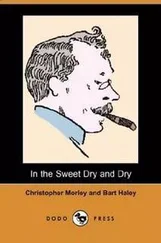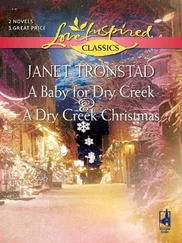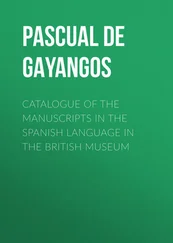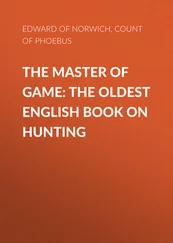Clanchy raises the interesting point that medieval ink writing may have been an activity restricted to the warmer parts of the year in connection with two accounts by the 11 th-c. Anglo-Norman chronicler ORDERICUS VITALISOrdericus Vitalis (Clanchy 1993: 116 and 119). In one instance, ORDERICUS interestingly relates that he wanted to make a copy of a life of St William when he was in Winchester in wintertime, but “the winter cold prevented [him] from writing”, so he made “a full accurate abbreviation on tablets” (quoted from Clanchy 1993: 119). If this was not only a peculiarity of ORDERICUS’s writing habits, but represents a general, positive medieval attitude towards stylus writing during inclement temperatures, it is at least imaginable that dry-point glossing may have been a practical alternative to ink glossing during the cold season, too. If so, dry-point glossing may have been practiced in wintertime especially frequently, but I cannot think of a way how to validate this interesting proposition.
The stylus was not the only alternative to quill and ink in Anglo-Saxon MSS: Pencils,pencil writing for instance, were also used in the ruling of late Anglo-Saxon MSS. However, their use for that purpose became only widespread towards the very end of the Anglo-Saxon period (cf. Ker 1957: xxiv–xxv). Pencil writing is rather the exception in Anglo-Saxon MSS, too, but from four MSS with OE dry-point glosses, pencil writing is reported:
Cambridge, CCC 173Cambridge, Corpus Christi CollegeMS 173 [4/K:40] features OE glosses in ink and in dry-point. Ker (1957: 59) mentions that some of the glosses are entered in pencil, too, but neither Meritt (1936, 1945) nor Page (1973, 1979, 1982) mention this manner of entry. Page (1973: 210) notes: “Some [glosses] are in ink, some dry-point, and the two often overlap.” Perhaps that “overlap” is in fact pencil writing (see below).
Cambridge, CCC 223Cambridge, Corpus Christi CollegeMS 223 [5/K:52] features OE glosses in ink, dry-point and pencil. Based on Meritt’s description of the pencil writing (“a coloring matter which is now a faint purple”, 1945: 28), the actual deposit could either consist of coloured chalk – similar to the deposit created by a present-day crayon – or perhaps minium.8
Cambridge, UL Kk. 3. 21Cambridge, University LibraryKk. 3. 21 [11/K:24] is reported to feature the words byrnstan beoffan sunu ælfnoð ælrices sunu æt hrocanlea written twice, once in sprawling pencil, and once in ink, on the originally blank leaf at the end of the last quire of the MS (Ker 1957: 37).
London, BL Additional 40000London, British LibraryAdditional 40000 [15/K:131] may perhaps feature some glosses in faded pencil writing, as mentioned by Ker (1957: 163), but there is no mention of pencilling in Meritt’s (1961: 42 [no. 4]) edition.
Similar to dry-point glosses, OE pencil glosses have not yet been studied in detail, but they do not seem to be nearly as common as dry-point glosses.9 If pencil or crayon glosses fade or smudge, they may, however, sometimes leave a dry-point like appearance behind and hence may erroneously be identified as “pale” ink glosses. Consequently, they are perhaps often not distinguished correctly from dry-point glosses in the literature.10 Further research, focussing specifically on the physical properties of pencil and dry-point writing, is called for.11
2.3 Excluded Dry-Point Material from Anglo-Saxon Manuscripts
Some Anglo-Saxon MSS feature additions in dry-point that are very interesting in their own particular way, yet the MSS will not be considered as OE dry-point gloss MSS in the present study, because the additions do not consist of OE glosses as outlined above. The dry-point additions may be made up of non-linguistic material, they may consist of names or non-commentarial additions, they may consist of textual emendations to an OE text, or the linguistic status of the gloss material cannot be identified as OE for certain.
2.3.1 Dry-Point “Marks” and Dry-Point “Doodles”
Two dry-point features that are quite common in Anglo-Saxon MSS are simple “marks” – both interlinear and marginal – and “doodles” – mainly in the margins.dry-pointmarksdry-pointdoodles The broad category of marks can take on various forms (like those of similar marks in ink), such as acute or grave accents added for prosodic purposes or simple crosses, sometimes perhaps serving the same functions as present-day Post-it ®slips, namely marking passages that were of some importance or passages where the reader stopped and wanted to continue his reading later on. It may well be that such marks were entered in dry-point in order to leave the visual appearance of the MS intact, but it may just as well have been the case that the stylus was simply at hand and accordingly the marks were added in dry-point for practical reasons. Such marks in dry-point are often not mentioned in editions and MS catalogues, and their study – and hence our documented knowledge of them – is restricted to individual MSS.1
The other common dry-point element in Anglo-Saxon MSS is “doodles” – often small, sometimes largish drawings, executed in dry-point, most often found in MS margins.London, British LibraryCotton Vitellius A. xix2 They feature all kinds of motifs, sometimes related to the text next to it, sometimes (at least seemingly) unrelated, but – like dry-point glosses – they generally do not show well on photographic facsimiles,3 so their documentation is often restricted to hand-drawn copies.4 Similar to dry-point glosses, dry-point doodles are outshone by ink and colour specimens, which lend themselves more easily to art historians’ interests. Neither dry-point marks nor dry-point doodles feature OE language material; hence, they are not discussed here.
2.3.2 Dry-Point Names and Non-Gloss Entries
Sometimes we find names scratched into MSS that may have been meant to state either the owner or perhaps merely the reader of the document at hand, but no discernible connection can be established between the main text of the MS and the names that are entered.dry-pointnames Lichfield, Cathedral Library Lich. 1Lichfield, Cathedral Library Lich. 1 [G:269] (also known as the “Gospels of St Chad”) provides a documented example of a MS in which 8 (perhaps 9) names are added in dry-point to the margins and to empty spots.1 Interestingly, six of the names also form part of a long list of names added – presumably as a liber vitae – in ink to p. 141 of the same MS. Charles-Edwards & McKee (2008: 87) suggest that the writers of the names “wished to mark a personal link with the manuscript”, though it is not clear if the dry-point entries pre- or post-date the ink entries. In any case, these dry-point entries do not constitute an identifiable comment on the base text per se. Of course, it is no coincidence that the MS contains the Gospels and it was certainly the high status of the MS that ultimately led to its use as a liber vitae ; however, adding the names was definitely not meant to be a comment of any kind on the text. The dry-point material of the Lichfield Gospels can be visualized in an interesting fashion on the website of the ‘Lichfield Cathedral Imaging Project’.2
Such entries give interesting codicological and palaeographical cues for a MS’s history and it seems likely that dry-point additions of this kind may be discovered in further MSS in the future. They partly touch on the subject of dry-point glossing as they are also evidence for the use of styli as writing instruments in the MS context, but their MSS will not be included in the Catalogue presented below, as they do not qualify as glosses as outlined above.
CLA (2: 257) reports letters in dry-point that probably represent an Anglo-Saxon name inscribed in Oxford, Bodleian Library Selden Supra 30Oxford, Bodleian LibrarySelden Supra 30 [G:665]: “the letters EADB and +E+ cut with a stylus on page 47 may refer to Eadburga, Abbess of Minster (†751)”. Hence, the inscription may be seen as evidence that the MS belonged to Minster-in-Thanet Abbey at some stage. The MS itself is written in uncials (cf. also Lowe 1960: 21), “probably in a Kentish centre, to judge by the script” ( CLA 2: 257), sec. viii 1and contains the Acts of the Apostles.Wolfenbüttel, Herzog August Bibliothek Cod. Guelf. 173
Читать дальше












